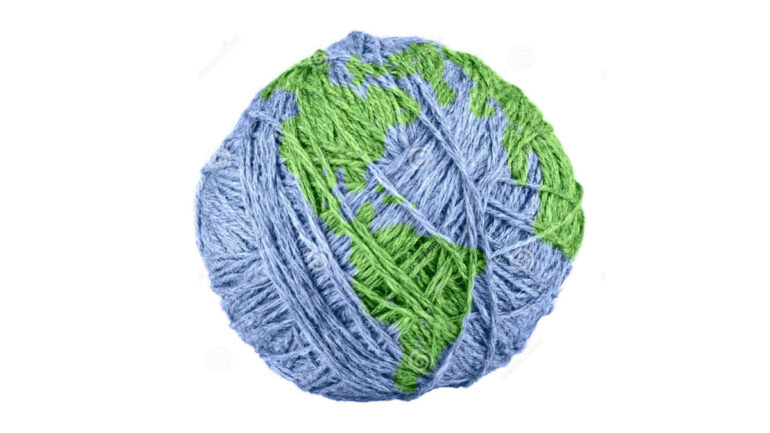Sustainable? Have you been seeing that word thrown around in fashion conversation lately? Here’s why. Fast fashion retailers are everywhere, making it easy to fall into the trap of spending our coin.
However, as convenient as fast fashion may be for us, it is detrimental to the planet. According to an Impakter report, “fast fashion is responsible for 4 percent of the world’s greenhouse gas emissions.” If that doesn’t hit home hard enough for you, here’s something to put into perspective.
The [fast] fashion industry is currently responsible for more annual carbon emissions than all international flights and maritime shipping combined. . .
Le, Ngan. “The Impact of Fast Fashion on the Environment – PSCIaNg.” Princeton University, The Trustees of Princeton University, https://psci.princeton.edu/tips/2020/7/20/the-impact-of-fast-fashion-on-the-environment.

On top of the emissions, fast fashion also heavily contributes to Earth’s overflowing landfills and water pollution. According to the Green Business Bureau, “Overall, toxic fashion contributes to 35% or 190,000 tons per year of ocean microplastic pollution. Even greater, the fashion industry produces 92 million tons per year of textile waste which primarily ends up in landfills or incinerated.”
If you love the planet as much as we do, here are ten ways we can do our part while making our closet more sustainable. If you’ve heard about sustainable clothing being absolutely atrocious don’t worry, we’re here to dead that as well.
1. Do Your Research!
As we already mentioned, it can be scary shopping for sustainable clothing. You may think that clothing will either be really plain or that it would be made out of poor quality materials, but that’s not the case at all! Here are some brands that not only strive to protect the Earth but make sure we do so in style.
2. Everyone does it, Go Thrifting!
Thrifting is not always easy. However, if you do some searching around to find some consignment or thrift stores that are a good match for your style, this will be a walk in the park. Overall, thrifting is such a gem when it comes to building a sustainable closet. It keeps unwanted clothes out of landfills, reduces carbon and chemical waste from production, and lowers water consumption. Also, most thrift shops give some of their profits to charities, which include environmental charities. If you don’t have any thrift stores in your area, shop on sites like Threadup, Depop, or Poshmark.
3. Make Use of What You Already Have, Save Your Money!

We aren’t trying to sound like Julius from Everybody Hates Chris, but save your money and make outfits from what you already have in your closet. You shouldn’t be buying pieces that you can only wear once. Saving your money also reduces costly consumerism. Overall, this practice helps to prevent us from being wasteful and minimizes the demand for textile factories that produce clothing.
4. Don’t Always Follow Trends.
It’s easy to get caught up in trends. It’s fashion, why wouldn’t you? On the other hand, you don’t always have to follow the trends you see. We don’t realize it, but when we get caught up in trends, we forget about our old clothes and can kick them to the curb. We rush to the nearest store or buy the newest piece just for us to not wear it in a month. Aim for timeless pieces, or find ways to rework your clothes to work for you. Regardless, trends always go and come back so the piece you’ve been thinking about throwing away, you might want to keep.
5. Buy Clothes That You Can Wear Any Season.
Opt for clothes that you can wear any season and we don’t just mean timeless pieces. Literally, buy clothes that can be worn in any season despite the weather. T-shirts can be layered, convertible cargo pants can work, and two-piece sets can be mixed and matched with other clothes. Just get creative, this could turn into something fun!
6. Be Conscious of the Fabric You Wear
When you opt for biodegradable and organic fabrics, it helps to cut down industrial water pollution by 20%. Much of this pollution is caused by factories dyeing and treating fabric. That is why it’s important to opt for eco-friendly fabrics because it affects the environment long term. Try to avoid clothes that are acrylic and polyester. They are cheaper options as opposed to cotton and harm the environment.
7. Pay Attention To Washing Instructions
This one may sound really silly but in retrospect, it’s not! When you follow the proper care instructions for your clothes, it improves their longevity. As a result, you cut down on the cost of buying new clothes and your clothes last longer. It’s a win-win.
One Step Closer to a Cleaner Earth
As more and more companies and brands get called out for the impact of their carbon footprint, we are beginning to see a transition in fashion. Luxury brands like Hermés are experimenting with California mushroom materials, Stella McCartney uses re-engineered cashmere and ethically sourced wool. Even Gucci stated they “will make 95% of their raw material traceable”. Hopefully, all of us will aim for sustainable choices when it comes to fashion not only for Earth Day but for a healthier environment.
Do you have more ideas on how to build a sustainable closet? Do you think the effort to get there will be an easy transition? Let us know more of your thoughts on Twitter, Instagram, Facebook, TikTok, and Pinterest!











